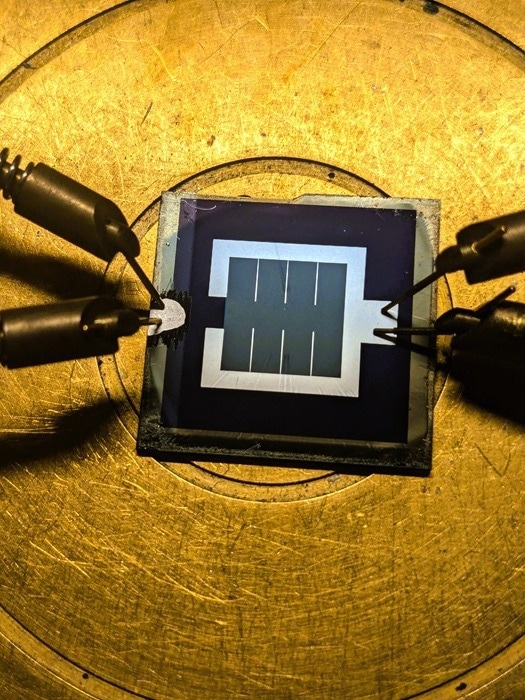Reviewed by Lexie CornerFeb 5 2025
Researchers from Humboldt University Berlin and HZB have developed a tandem solar cell combining a perovskite-based top cell with a CIGS (copper, indium, gallium, and selenium) bottom cell. By optimizing the contact layers between the two cells, the team achieved an efficiency of 24.6 %, which, according to the Fraunhofer Institute for Solar Energy Systems ISE in Freiburg, Germany, represents the current world record.
 The tandem cell consists of a combination of CIGS and perovskite and achieves a certified record efficiency of 24.6 %. Image Credit: ©G. Farias Basulto/HZB
The tandem cell consists of a combination of CIGS and perovskite and achieves a certified record efficiency of 24.6 %. Image Credit: ©G. Farias Basulto/HZB
Tandem solar cells, which integrate two semiconductor thin films, offer high efficiencies while maintaining a low environmental impact. Thin-film solar cells require minimal energy and material for production, making them a sustainable alternative to conventional silicon-based photovoltaics. CIGS thin films can also be applied to flexible substrates, further expanding their potential applications.
The development of this record-breaking tandem cell was a collaborative effort. Stefan Gall supervised the fabrication of the top cell, which was produced by Thede Mehlhop, a master's student at TU Berlin. HZB and Humboldt University of Berlin jointly developed the perovskite absorber layer. Guillermo Farias Basulto, a researcher at HZB, designed the CIGS sub-cell and contact layers. The fabrication process utilized HZB’s high-performance KOALA cluster system, which enables vacuum deposition of contact layers and perovskites.
At HZB, we have highly specialized laboratories and experts who are top performers in their fields. With this world-record tandem cell, they have once again shown how fruitfully they work together.
Rutger Schlatmann, Professor and Spokesman, Solar Energy Department, Helmholtz-Zentrum Berlin (HZB)
This is not HZB’s first world record. The institute has previously set multiple efficiency records for tandem solar cells, including silicon-perovskite and CIGS-perovskite combinations.
We are confident that CIGS-perovskite tandem cells can achieve much higher efficiencies, probably more than 30 %.
Rutger Schlatmann, Professor and Spokesman, Solar Energy Department, Helmholtz-Zentrum Berlin (HZB)